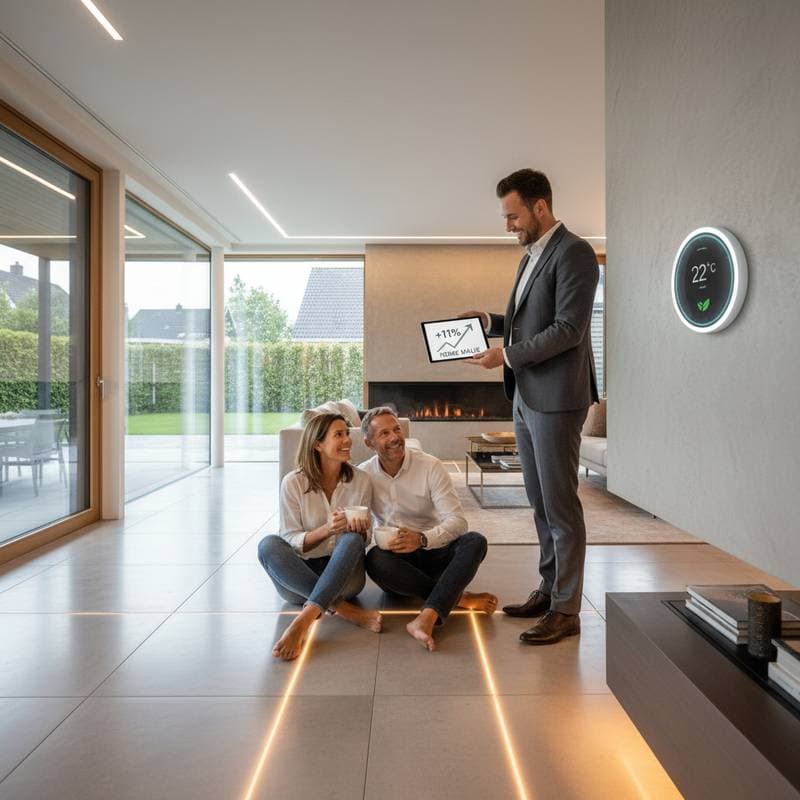Smart Glass: Slash Energy Costs 15% in 2025 Home Upgrades
Direct answer: Smart glass can cut your energy bill by roughly 15 percent. It works by tinting automatically to block heat and glare, reducing air conditioning use while keeping natural light. Costs run higher than standard windows, but rebates and energy savings help offset the difference.
Steps to Upgrade to Smart Glass Windows
- Assess your current windows. Check for leaks, drafts, or frame damage. Smart glass performs best when installed in good frames.
- Pick the right glass type. Choose electrochromic for full control, thermochromic for passive savings, or photochromic for simplicity.
- Get quotes. Compare costs from at least three certified installers.
- Check energy rebates. Many regions offer credits for energy-efficient windows.
- Schedule installation. A pro can replace old panes with minimal disruption.
- Set up controls. Smart systems may link to an app or home automation hub.
- Monitor performance. Track energy savings on your utility bill.
Time to Complete
- Single window replacement: 1 to 2 hours.
- Full-home installation: 2 to 5 days depending on size.
Time increases if wiring or integration with smart home systems is required. Faster results come from clear scheduling and professional installers familiar with your window brand.
DIY vs Pro Installation
DIY if:
- You have experience replacing standard windows.
- You’re only swapping one or two small panes.
- The glass type is self-contained, like thermochromic or photochromic, with no wiring.
Hire a pro if:
- You’re using electrochromic glass that needs power connections.
- You want integration with smart home systems.
- Multiple large windows or custom frames are involved.
What pros do better:
Professionals ensure airtight seals, correct voltage connections, and code compliance. They also protect your warranty, which most manufacturers void if installed incorrectly.
Safety and Permits
Electric smart glass requires power routing, so check local codes. In some areas, an electrician’s sign-off is needed. Always cut power before connecting wires. Use ladders safely and wear gloves when handling glass.
If your home is in a historic district or HOA community, confirm that smart glass is permitted before replacing visible exterior windows. Some places restrict tint appearance or reflection.
Smart Glass vs Other Window Upgrades
| Option | Energy savings | Cost | Maintenance | Control |
|---|---|---|---|---|
| Standard double-pane | 10% | Low | Low | None |
| Low-E glass | 15% | Moderate | Low | None |
| Smart glass | 15%-25% | High | Low | Automatic or app-controlled |
Smart glass costs more but delivers comfort and flexibility that static coatings cannot. It responds in real time to weather, which is ideal for variable climates.
Maintenance and Longevity
Smart glass needs little upkeep. Clean it like any standard window using mild detergent and a soft cloth. Avoid ammonia cleaners that can damage coatings. Check wiring connections annually if your system uses power.
Most smart glass units last from 20 to 30 years. Electrochromic systems may need controller updates over time, but the glass itself holds up well. If one panel fails, replacement is straightforward and usually covered under warranty for several years.
Smart Glass and Home Value
Buyers see smart glass as a premium feature. It adds modern appeal and energy savings that stand out in listings. Real estate agents report that high-efficiency windows can raise resale value by several percentage points, especially in energy-conscious markets.
Beyond numbers, smart glass signals a well-maintained home with thoughtful technology. That impression matters when buyers compare similar properties.
Smart Glass Incentives and Financing
Many utility companies and local governments offer rebates for energy-efficient windows. The amount depends on your region and energy provider. Some programs cover up to 20 percent of material costs. Ask your installer for certified products that qualify.
Financing options include green home improvement loans or on-bill financing through your utility. These can spread costs over time with low interest rates.
Pro Tips for Success
- Plan window replacement in mild weather for faster curing of sealants.
- Label each window circuit if using wired controls.
- Test tint function before sealing trim.
- Keep one spare controller module on hand for quick swaps.
- Schedule a system check every few years.
These small steps help maintain performance and extend lifespan.
Your Next Steps
If you want to cut energy costs and modernize your home, smart glass is one of the most effective upgrades. Start with a few key windows facing the sun. Track your energy use for a few months. If you see savings and comfort gains, expand gradually.
Work with certified installers who know local codes. Ask for references and proof of warranty coverage. With the right plan, smart glass can deliver steady comfort, privacy, and long-term savings for years to come.
FAQ
Does smart glass need electricity all the time?
Only electrochromic types use small amounts of power during tint changes. Once set, they hold the tint without constant draw.
Can I still open smart glass windows?
Yes. The smart function affects the glass, not the frame. Most models operate like standard windows.
What happens in a power outage?
Electrochromic glass usually reverts to its default state, either clear or tinted, depending on the model.
Is smart glass safe for pets and kids?
Yes. It has no radiation or harmful coatings. The tinting process is electrical or chemical, sealed within the glass layers.
Can smart glass be installed in skylights?
Yes. It’s a strong choice for skylights since it reduces heat and glare while keeping daylight.












